Browse Exhibits (21 total)
Catholic Ceremonies on the Plateau
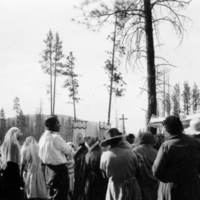
Tradition and ceremonies are central to the Catholic religion. On the Plateau, the Jesuit missionaries shared their religion with the Native Americans through a number of different sacraments and celebrations, notably the sacraments of First Communion and Confirmation and the Corpus Christi celebration.
There are seven holy sacraments in the Catholic tradition, and they are various ceremonies where Catholics are able to connect with God's grace. The sacraments include baptism, receiving the Eucharist, being confirmed into the church, reconciling one's sins, annointing of the sick, marriage, and holy orders, or becoming a priest. Our exhibit highlights the holy sacraments of First Communion, or recieving the Eucharist, and Confirmation, as well as the Corpus Christi celebration, which is not a sacrament.
Interactions between Missionaries and Children of the Columbia Plateau Region
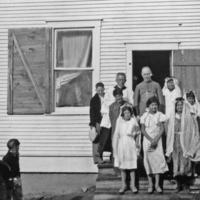
Interactions between the Jesuit Priests and the Native American Tribes of the Columbia Plateau region were dynamic and complex interactions. The purpose of this exhibit is to begin to shed light on some of the specific missions built by the Jesuit Priests, as well as to begin to understand the methods of conversion and evangalizing of the Native peoples of this region. This exhibit consists of primary sources, primarily photographs, taken by Jesuit priests at these missions, depicting Native children and adults throughout the conversion process.
Many priests focused on the Native children in terms of teaching and evanglizing, as the children were more succesible to learing new ways of life, and with the goal that these children would then live a Catholic life, and be able to pass on these teachings to future generations. By starting with the children, the Jesuits sought to evangelize future generations of Native peoples.
The conversion of these children consisted of both cultural and religious changes. The cultural aspect of change consisted of Western attire and cutting of their hair, as well as teaching English. In terms of religious conversion, glass lantern slides were commonly used to visually teach both children and adults the teachings of Catholisism. There is lots of evidence of First Communions, particularly at the Sacred Heart Mission, which is evidence of the conversion of many Native children.
Intersectionality of Cultures
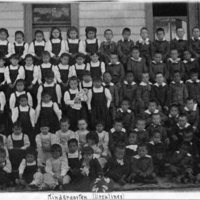
The Mission Grounds
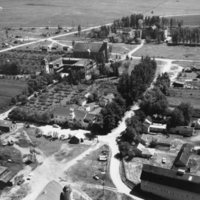
The Landscape
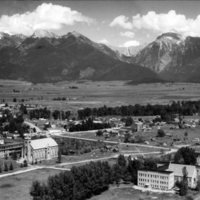
Critiquing Western Interpretations of Northern People
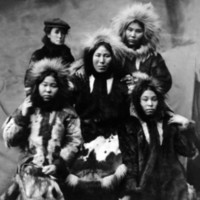
Primary sources are defined as first-hand testimony or direct evidence concerning the topic being explored. They are created by witnesses or recorders who experience the events or conditions being documented. However, it is important to take into account the perspective of the individual documenting the event. The Jesuits in the Northern Native communities experienced events, customs, and ceremonies with minimal or no knowledge about the event occurring. In other words the Jesuit journals and photographs were taken documented through an outsider’s perspective. At the most the Native people being “observed” helped the Jesuit documenting spell out their name. However, most of the photos taken do not contain names or descriptions. Even after living with the Native people for a period of time many of the Jesuits believed the Northern Native people to be savages with no purpose in life, who would be condemned, and therefore needed their salvation. This discrimination is seen throughout documentation, therefore making it difficult to verify description of people and customs.
King Islanders: Fur Trade and Mixed Race Families
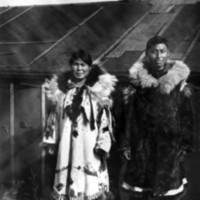
The photographs in this exhibit and much of the background research that accompanies it come the archives of the the Oregon Province of Jesuits. This exhibit also drew from the writings of Paul Tiulana, a King Islander born in 1921 on the island who wrote in the 1980s about his community's heritage. Thus, with the exception of Tiulana's writings, much of the information about and all of the images of the King Islanders presented here come to us through a Jesuit perspective.
This exhibit will focus primarily on the fur trade that was going on during this time and its impact on the King Islanders. The impact of the fur trade was seen not only through the clothing that it produced but also through the conflict that it brought. While the fur trade did provide a means for intercultural communication and revenue, it also brought forth the following: disease, alcohol, death of native trappers, and the depletion of native fur-bearing animal populations.
Cultural Change in the King Island Community
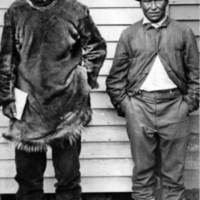
The photographs in this exhibit come from the archives of the Oregon Province of Jesuits housed at Gonzaga University. Information for this exhibit has been drawn from letters and journals of Father Bellarmine Lafortune, S.J. who lived amongst the King Islander community. His main goal was to bring Catholicism to the indigenous community. King Islanders had been isolated from white culture prior to the Nome Gold Rush of 1898 and this collection captures images of the period of transition that ensued.
This exhibit highlights photographs that reveal the tension formed by the Jesuits entering the King Island community and bringing entirely new religious and cultural ideas with them. The documents cited in this exhibit are written from a Jesuit perspective and reveal the inherent biases that the white people had against these indigenous peoples.
Special Collections at Santa Clara University have also digitized photographs of the King Islanders. For images taken by Bernard Hubbard, S.J. see: https://content.scu.edu/cdm/landingpage/collection/kingisland
Much of those photographs are from mid-twentieth century. Thus the Treca collection here are some of the earliest archival photographs of the King Island community.
Children as Catalyst of Conversion
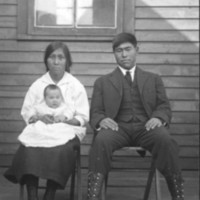
When the Jesuits came to King Island in the early 1900s, they largly focused on the children as an entry point for westernizing and converting the entire community to Catholocism.
The photographs in this exhibit and much of the background research that accompanies them come the archives of the the Oregon Province of Jesuits. This exhibit also drew from the writings of Paul Tiulana, a King Islander born in 1921 on the island who wrote in the 1980s about his community's heritage. Thus, with the exception of Tiulana's writings, much of the information about and all of the images of the King Islanders presented here come to us through a Jesuit perspective. The diary of LaFortune, S.J. was referenced, in addition to newspaper clippings from Washington State from the same time period.
This is a collection of photographs taken by Jesuit Joseph M. Treca in 1916. The photographs provide a snapshot of the King Islander community while they were in Nome.
Transitions of the Church
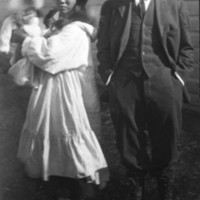
The photographs in this exhibit and much of the background research that accompanies them come the archives of the the Oregon Province of Jesuits. This exhibit also drew from the writings of Paul Tiulana, a King Islander born in 1921 on the island who wrote in the 1980s about his community's heritage. Thus, with the exception of Tiulana's writings, much of the information about and all of the images of the King Islanders presented here come to us through a Jesuit perspective.
This is a collection of photographs taken by Jesuit Joseph M. Treca in 1916. The photographs provide a snapshot of the King Islander community while they were in Nome.
King Island is about 40 miles off the coast of Alaska and 90 miles northwest of Nome. The first twenty years of the twentieth century was a time of change for this area. Following the Nome Gold Rush of 1898, whites came en masse to an area that had been relatively isolated from white culture beforehand. Thus, these photographs capture a community in a period of change.
Special Collections at Santa Clara University have also digitized photographs of the King Islanders. For images taken by Bernard Hubbard, S.J. see: https://content.scu.edu/cdm/landingpage/collection/kingisland
Much of those photographs are from mid-twentieth century. Thus the Treca collection here are some of the earliest archival photographs of the King Island community.
